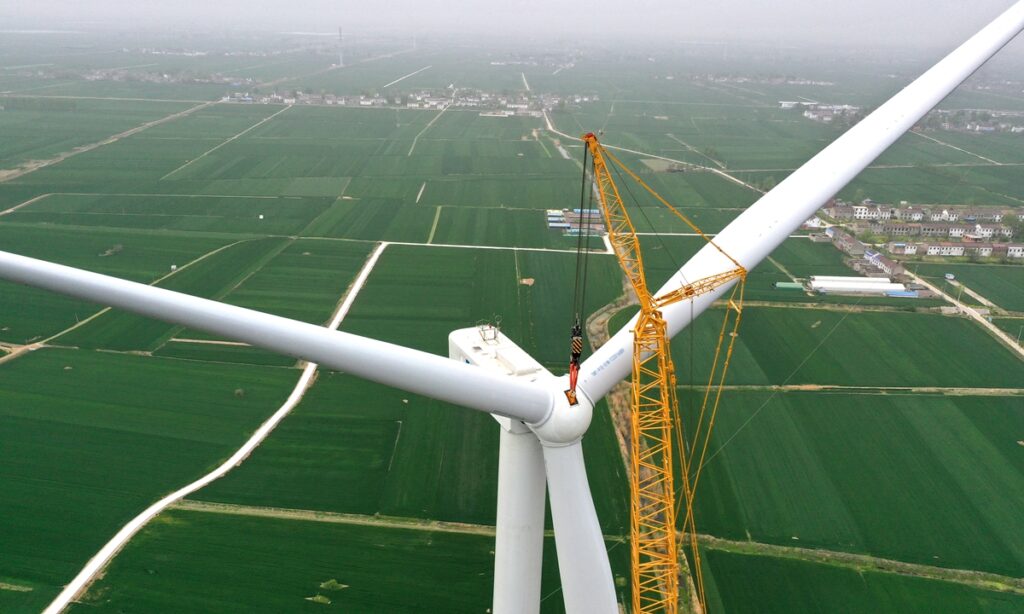Over the past 40 years, China’s large-scale afforestation and ecological engineering efforts have sequestered an average of nearly 400 million tons of carbon dioxide (CO2) per year through carbon sinks, effectively reducing global land-use carbon emissions, a report based on satellite remote sensing technology showed on Wednesday.
The report titled “Scientific Report on Global Carbon Emissions and Carbon Fluxes Remote Sensing Assessment” pointed out global greenhouse gas emissions have not been effectively controlled, with the atmospheric carbon dioxide concentration continuing to rise at an average annual growth rate of about 6 parts per thousand over the past decade. The global CO2 concentration has not significantly reduced even during the period of COVID-19.
Co-led by researchers from the Aerospace Information Research Institute, Chinese Academy of Sciences, and several other institutions and universities, the report was released at a seminar held in Beijing on Wednesday. The report used satellite remote sensing technology to assess global and major country anthropogenic carbon emissions and land ecosystem carbon fluxes.
The report said the global accelerated deforestation trend has not been curbed, with continuous forest area reduction and emissions of about 3.2 billion tons of CO2 annually from land-use change, the second largest emission source after fossil fuel carbon emissions.
However, during this period, China has captured an annual average of nearly 400 million tons of carbon dioxide in carbon sinks through afforestation and ecological engineering, it noted.
The carbon absorption capacity of global terrestrial ecosystems continues to increase, the report pointed out. It showed that global terrestrial ecosystems absorbed an average 13.7 billion tons of CO2 per year over the past decade, of which China’s terrestrial ecosystems absorbed about one-10th of the global total.
Over the past 40 years, soil absorbed an average of about 1.3 billion tons of CO2 per year globally, of which China’s soil carbon sequestration rate was the highest, accounting for about one-quarter of the global total thanks to China’s implementation of large-scale agriculture conservation and ecological management measures, according to the report.
The report also shows that Chinese carbon satellites can not only achieve high-precision observation of global atmospheric CO2 concentrations, but also demonstrate net carbon fluxes.
After optimized calculation by Chinese carbon satellites, the error of global net carbon flux estimation has been significantly reduced, reducing the annual net carbon flux estimation margin of error from 4.3 billion tons of CO2 to 470 million tons, the report said.
China will launch a next-generation carbon satellite in 2025, which can monitor global atmospheric CO2 concentrations with higher precision and higher efficiency, according to Wu Yirong, an academician and head of Aerospace Information Research Institute, Chinese Academy of Sciences.
The satellite is also expected to further improve the country’s satellite monitoring capabilities for atmospheric greenhouse gas concentrations and anthropogenic carbon emissions.
(Global Times)




